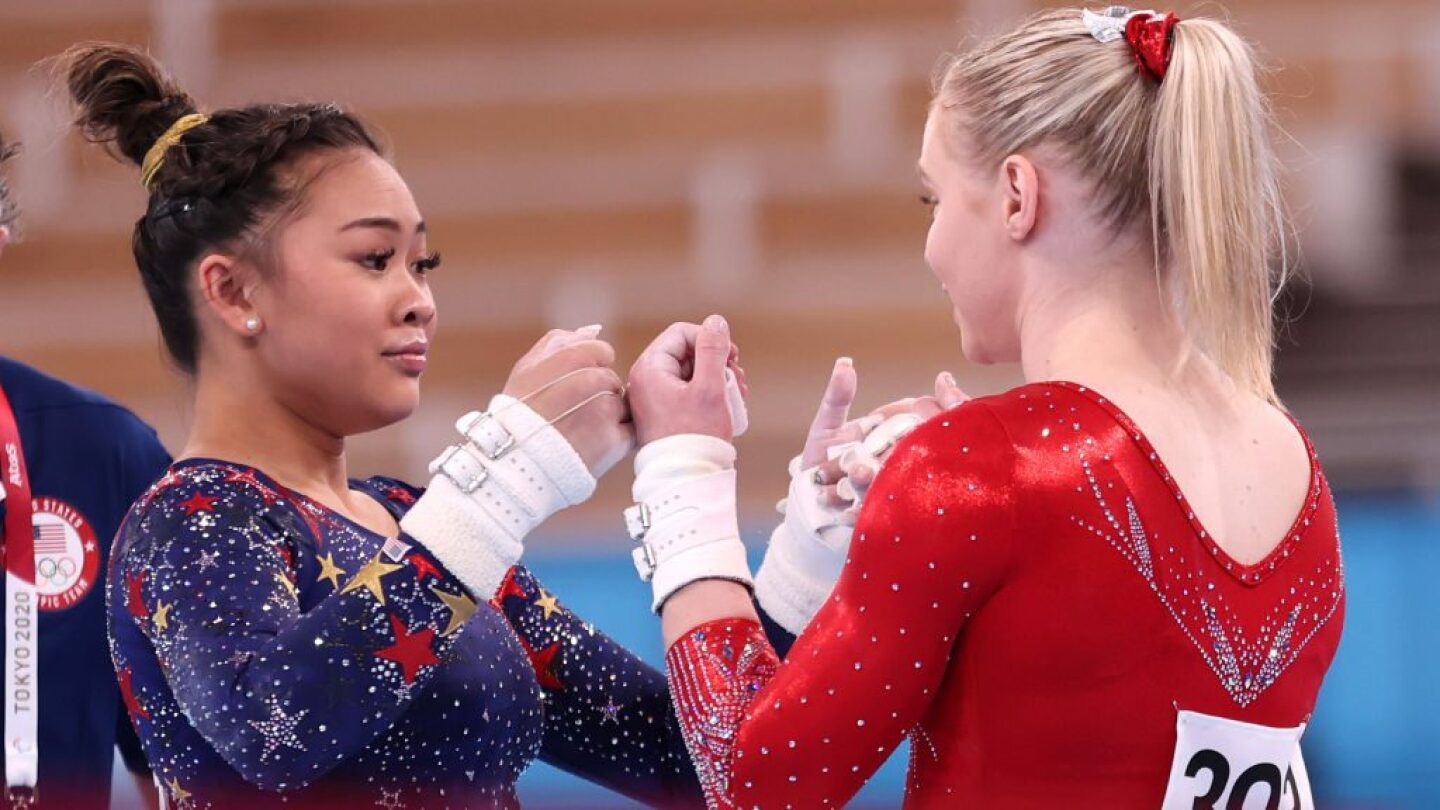No U.S. female gymnast has competed at an Olympics, then done NCAA gymnastics and come back to compete in another Olympics. That may change in 2024.
Suni Lee, Jade Carey, Jordan Chiles and Grace McCallum, four of the six members of the Tokyo Olympic team, participate in their first NCAA Championships next week. All could return to elite-level gymnastics at some point before the 2024 Paris Games.
Lee, the Olympic all-around gold medalist, repeated over the last eight months an unspecified desire to get back into international competition.
“I don’t think I’ve reached my full potential yet. I have so much more in me,” she recently told her coach at Auburn, Jeff Graba, according to ESPN.com.
Carey, the Olympic floor exercise champion, shared on social media on Wednesday that she accepted an invitation to a USA Gymnastics national team camp after NCAAs, a signal that she intends to compete at the U.S. Championships in August, “while remaining dedicated” to her Oregon State program.
ON HER TURF: More on Carey’s return to elite gymnastics
Chiles, who matriculated at UCLA, said in post-Tokyo interviews that a 2024 Olympic run was a possibility. She went farther last week, saying she will try to make this fall’s world championships team, according to Olympics.com.
“I keep telling everybody, I’m not done,” Chiles said, according to the report, noting there was still something left to accomplish after a team silver in Tokyo.
McCallum, a Utah freshman, said Thursday that she hasn’t decided yet whether she will return to elite-level gymnastics, a Utah spokesperson said.
Traditionally, but not always, a star gymnast going the college route has meant retirement from elite.
The NCAA format differs from elite. Routines are generally easier -- more emphasis is on execution than difficulty -- and the scoring system is still out of a 10.0, which international gymnastics did away with after the 2004 Olympics.
But the new name, image and likeness opportunities made NCAA gymnastics more appealing to Olympic medalists and future Olympic hopefuls who otherwise may have turned professional and become ineligible for college competition.
The only previous time that four U.S. female gymnasts from a single Olympic team later performed collegiately was after the 2000 Sydney Games.
Olympic all-around gold medalists Carly Patterson, Nastia Liukin, Gabby Douglas and Simone Biles all turned professional as teenagers. Biles, who committed to UCLA before turning pro in 2015, hasn’t ruled out a run for a third Olympics in 2024, but has not announced any specific comeback plans.
Some recent U.S. Olympians stayed amateur and competed in college, but did not return to elite. Most recently, 2012 gold medalist Kyla Ross and 2016 gold medalist Madison Kocian, both for UCLA.
Women also successfully transitioned from NCAA to their first Olympics. Mohini Bhardwaj was 10th at the 1996 Olympic Trials, then went to UCLA and returned to elite to make the 2004 Olympic team. Alicia Sacramone, after missing the 2004 Olympics, competed for Brown and then made the 2008 team.
MyKayla Skinner was an alternate at the 2016 Rio Games, then competed for Utah for three seasons, moved back to elite and made the Tokyo team at age 24, becoming the oldest U.S. Olympic female gymnast since 2004.
Before women’s gymnastics became an NCAA championship sport in 1982, Linda Mulvihill competed collegiately while at the University of Illinois among her three Olympic appearances in 1964, 1968 and 1972.
OlympicTalk is on Apple News. Favorite us!








